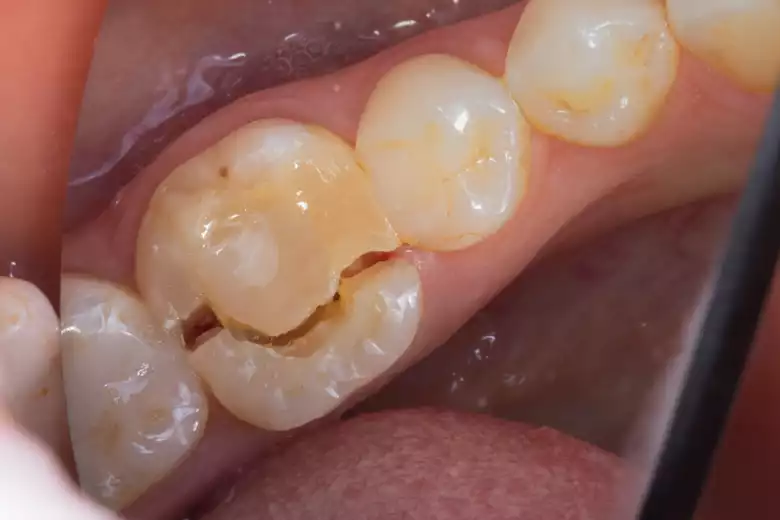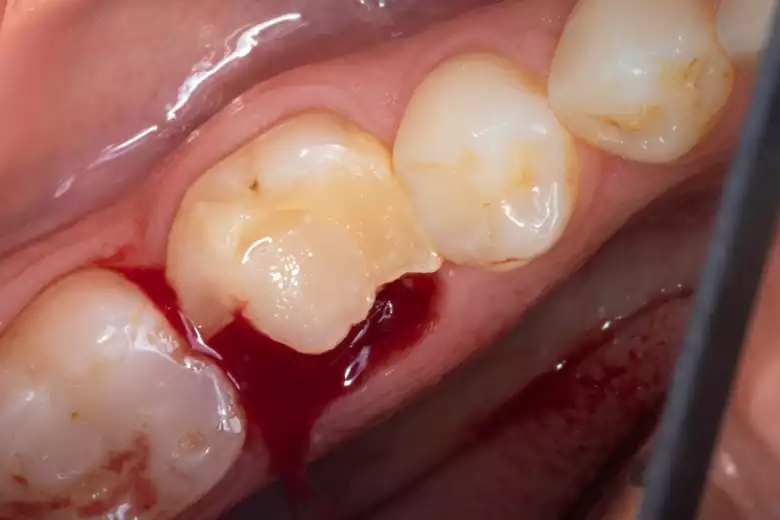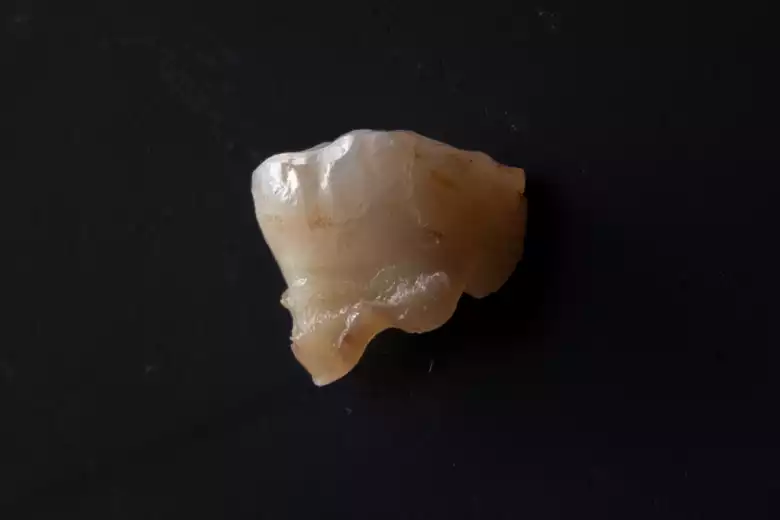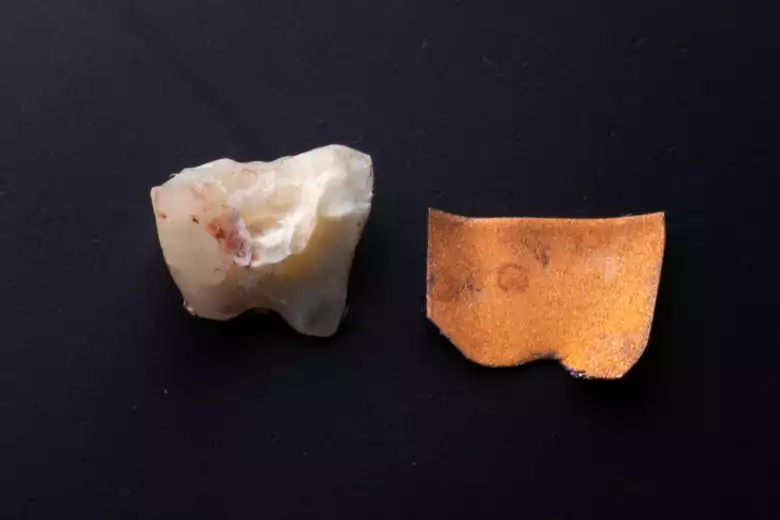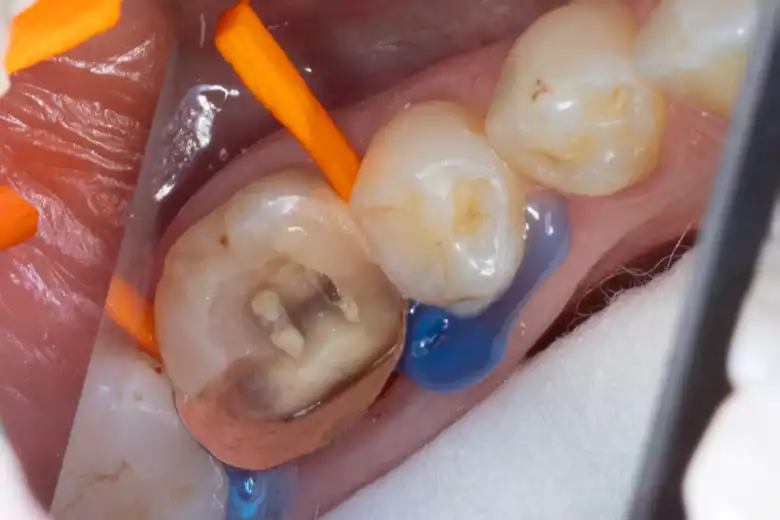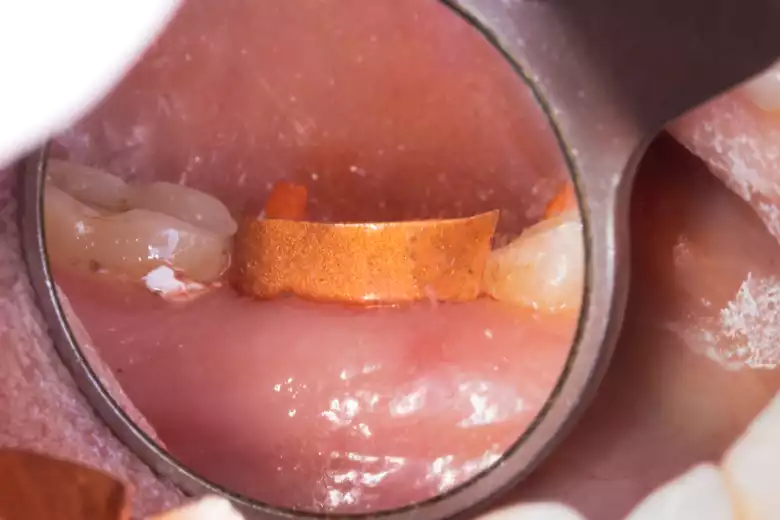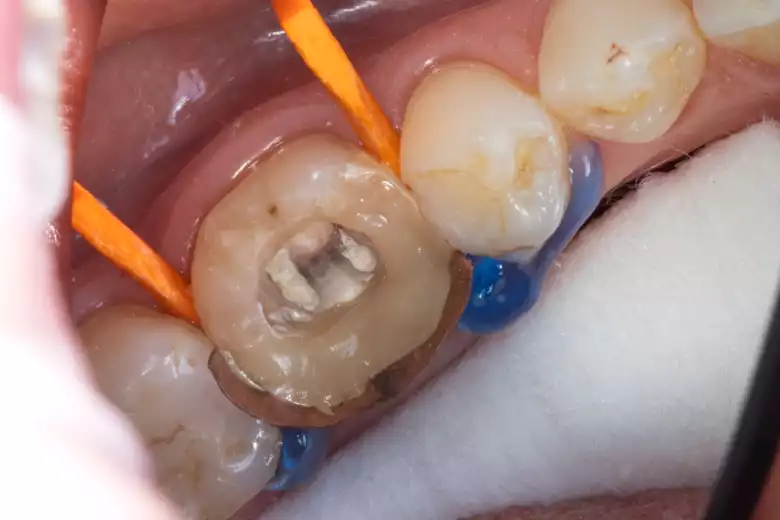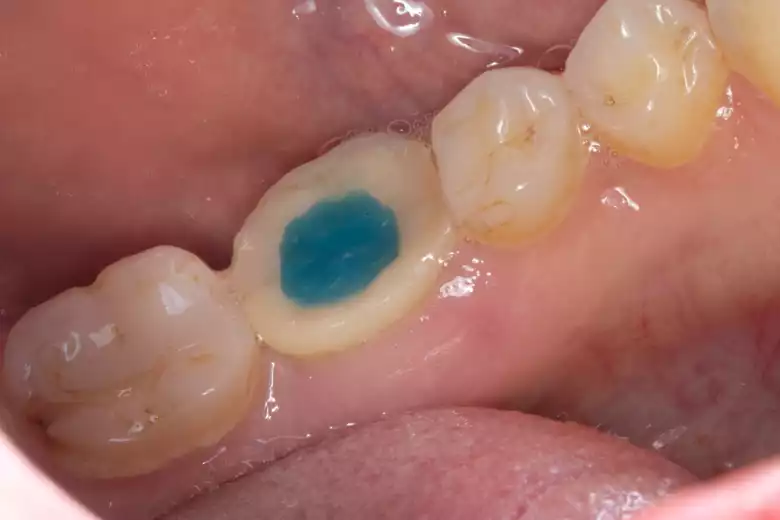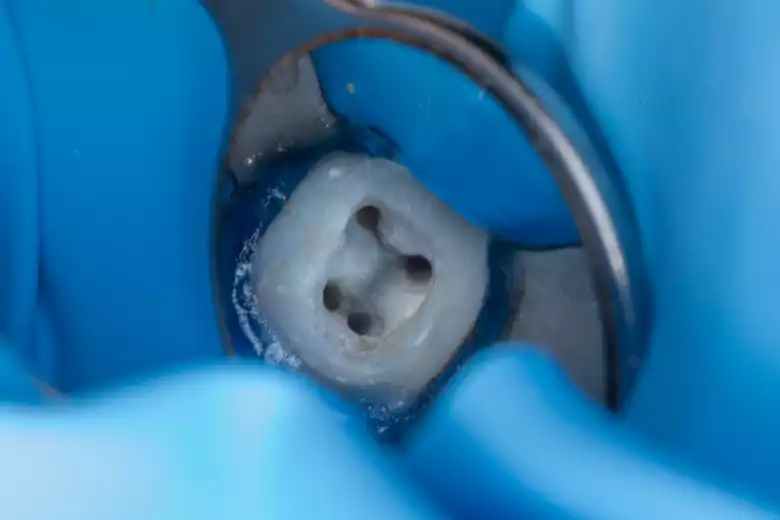Forgotten copper rings
The use of copper rings has a long history in dentistry.
I have often heard from many of my older colleagues that they like to use them for their versatility and in some indications even without a better alternative.
Not easy to order at the moment. Made in Germany (E. HahnenkrattGmbH Dentale, Königsbach-Stei), sold in India, no possibility to ship to Europe :)
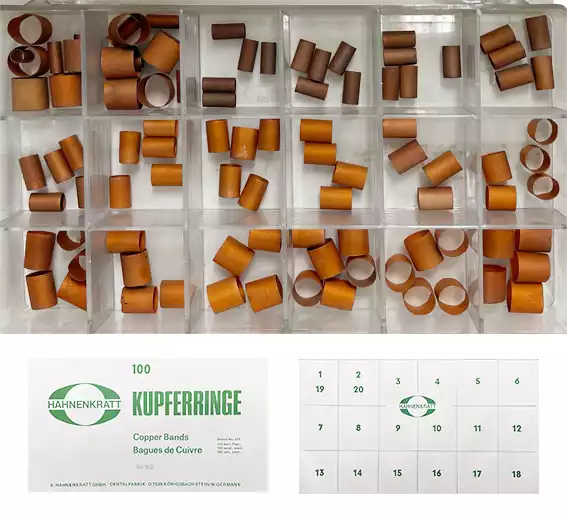
The two most common indications are
- Copper band impression technique - probably rarely used today
- Copper band to make resin cores in endodontically treated teeth lacking coronal structure, and that's what this article is about.
We are all familiar with situations where modern sophisticated matrix systems fail in large complicated destructions, often subgingivally, and we have nothing circular to fall back on. Often the matrix doesn't stay in place properly or falls out, and trying to help the wedges results in deformation of the shape or a gap that can't be sealed.
In this case, the copper band is adapted to the contour of the remaining tooth structure and extends beyond the margins to ensure complete insulation, ideally in combination with Teflon to provide a matrix for the fabrication of a core.
When a fibre-reinforced composite post and core are required due to extensive loss of natural tooth substance, the operative field must be isolated to avoid contamination, especially when using an adhesive technique.
It has been suggested that a minimum ferrule of more than 1.5-2 mm is required to ensure the success of restorations in endodontically treated teeth. The length of the ferrule is influenced by the biological width, as maintaining the biological width is essential for the health of the supporting tissues. In addition, the risk of failure is reduced when a wall of residual tissue is preserved.
In endodontically treated teeth with subgingival margins, the use of a clamp will hinder the correct fit of the matrix to the tooth. In contrast, the use of a copper band that fits properly under the subgingival area allows the tooth to be isolated without the need for a rubber dam. In addition, a clamp can be placed on the tooth after the copper band has been placed if a rubber dam is required to isolate the field.
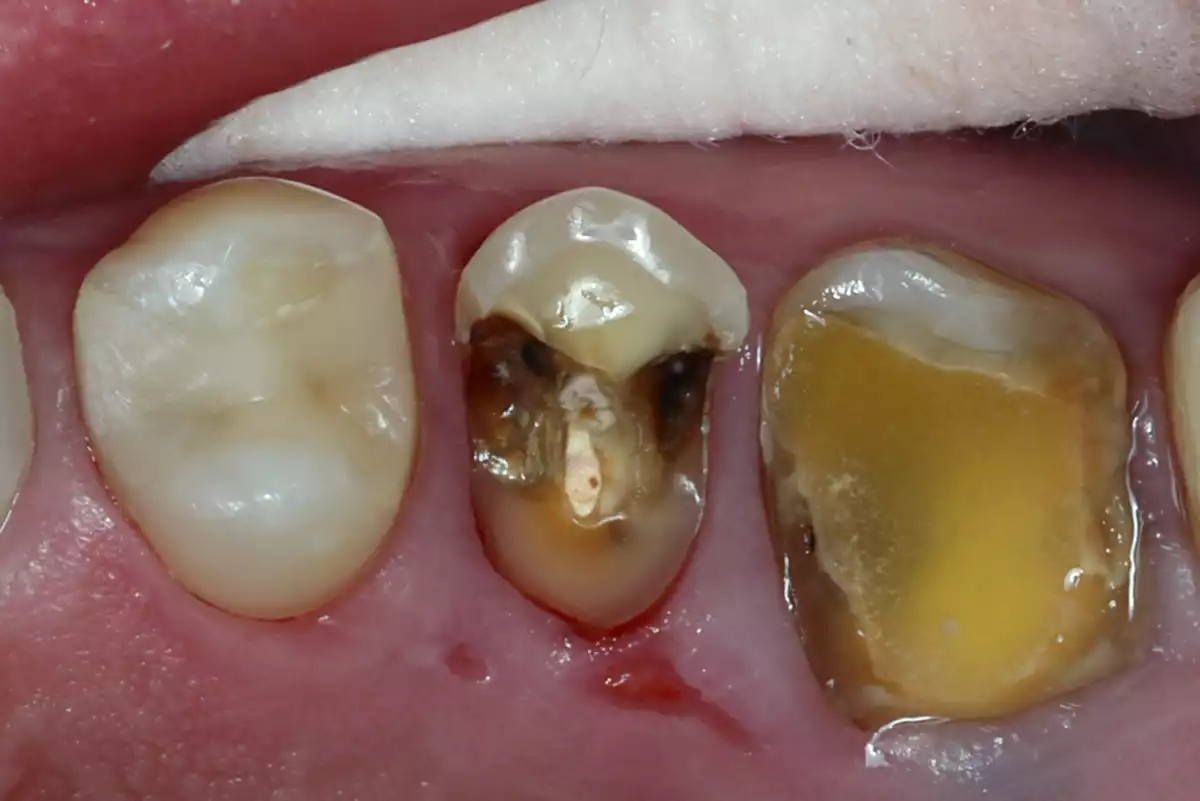
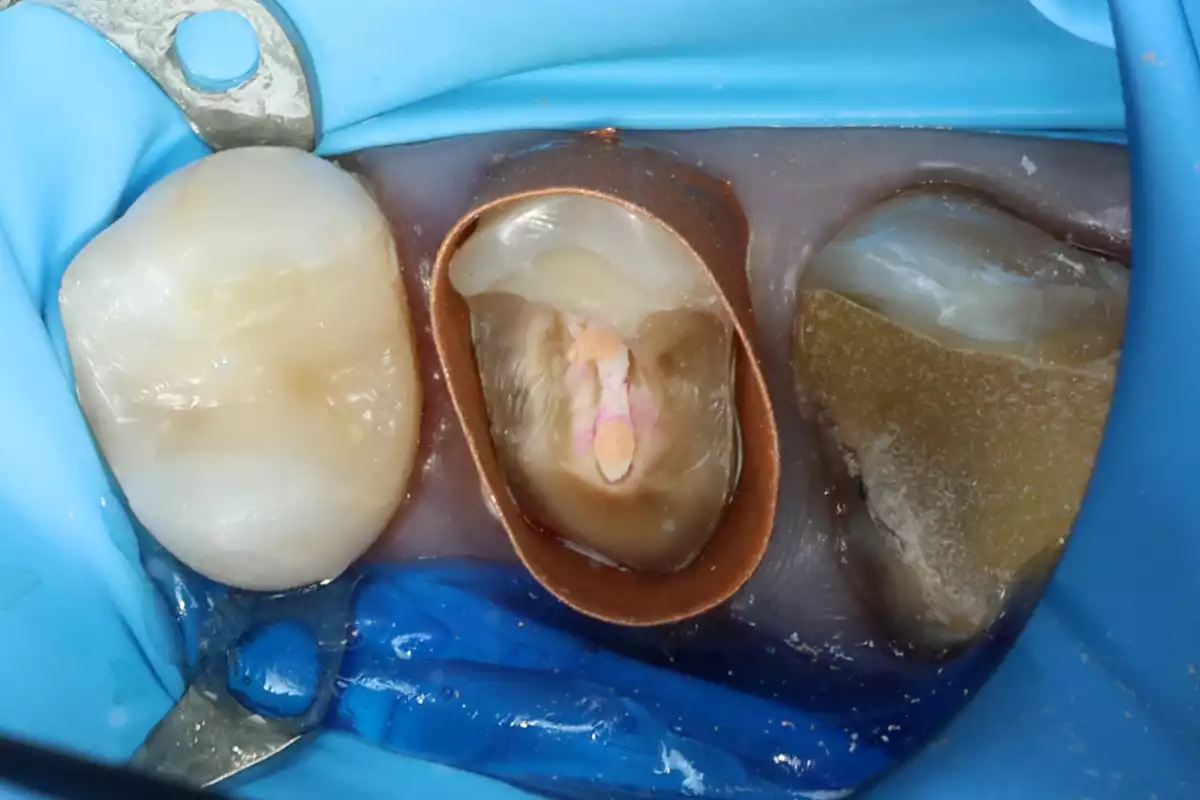
CLIINICAL TECHNIQUE
Pre-insertion of the copper band is necessary to create a bevel in the infragingival margins and to facilitate insertion of the copper band. Selecting the correct diameter of the copper band is an important step in this procedure. They are available in a range of diameters from 5 to 12 mm and can be hard or soft.
The copper band should be precisely adjusted to the contour of the remaining dental structure and extend beyond the margins to ensure complete isolation. In those teeth in which the tooth is ovalshaped, it is advisable to ensure that the copper band will adapt to the contour of the tooth.
In cases where there is a residual wall of tooth tissue, the copper band must be cut to follow the shape of the margin to ensure that it extends into the subgingival areas. The copper band is then trimmed with curved-tip metal cutting scissors to the height of the future core, using the height of the adjacent teeth as a guide. The prepared copper band is then seated by applying sufficient vertical pressure with the thumb.
Once the post and core have been fabricated, the copper band is removed by making a vertical cut along the full height of the copper band with a diamond bur.
A copper band is the only matrix that can be intimately adapted to the tooth structure in the subgingival area with perfect intrinsic stability and excellent tightness.
Of course this technique depends on the clinician’s skill, but if we're patient, the result will be perfect. Dentistry in general is about the skill of the dentist and also about a lot of useful tools that make our work easier.
